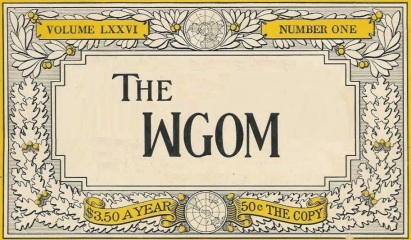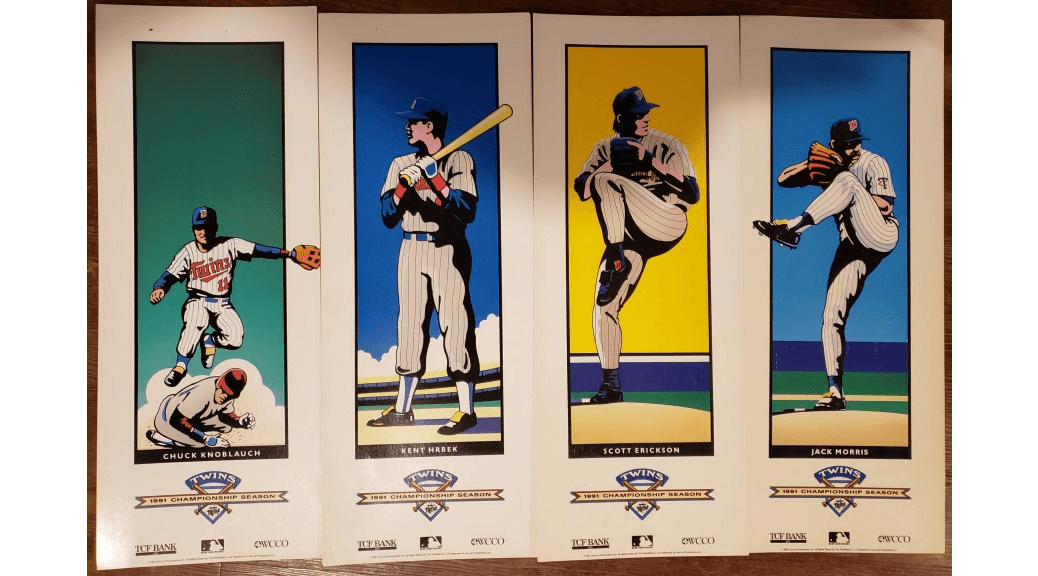MILWAUKEE 6, MINNESOTA 5 IN MILWAUKEE
Date: Friday, May 3.
Batting stars: Chuck Knoblauch was 3-for-5 with two doubles. Dan Gladden was 2-for-5. Brian Harper was 1-for-4 with a two-run homer, his third.
Pitching stars: None.
Opposition stars: Paul Molitor was 4-for-4 with a triple and three runs. Jim Gantner was 2-for-4. Franklin Stubbs was 1-for-2 with a walk and a sacrifice fly.
The game: Molitor led off the first with a single, went to second on a ground out, took third on a wild pitch, and scored on another ground out to give the Brewers a 1-0 lead. The Twins responded with five in the second. Chili Davis led off with a single and Harper hit a two-run homer. It did not kill the rally, as the Twins strung together four consecutive one-out singles. The hits came from Mike Pagliarulo, Al Newman, Gladden, and Knoblauch and made the score 4-1. A ground out brought home the fifth run of the inning and left the Twins with a 5-1 lead.
Unfortunately, that was as good as it got for the Twins. After wasting a leadoff double by Greg Vaughn in the second, Milwaukee got back into the game in the third. Molitor and Gantner led off with singles and Robin Yount walked to load the bases with none out. Stubbs hit a sacrifice fly and Vaughn had an RBI ground out to cut the Twins' lead to 5-3. Molitor struck again in the fifth, leading off with a triple and scoring on Gantner's single to make the score 5-4.
The Twins clung to that lead until the eighth. Stubbs got a one-out single, driving Jack Morris from the game and bringing in Rick Aguilera. He walked Vaughn, a passed ball moved the runners to second and third, and Dante Bichette tripled to bring them both home and give the Brewers a 6-5 advantage. The Twins had just two hits after the second inning and they did not get one in the ninth, and so the game ended.
WP: Jaime Navarro (2-0). LP: Aguilera (0-2). S: Edwin Nunez (3).
Notes: Gene Larkin was once again in right, with Kirby Puckett in center. Shane Mack came in for defense in the eighth, playing center with Puckett moving to right. Newman was at shortstop, replacing Greg Gagne.
Knoblauch raised his average to .330. Harper was batting .321. Puckett was 0-for-4 and was batting .311. Larkin was 0-for-4 and was 1-for his last-11. He was batting .310. Aguilera gave up a run on a hit and two walks in two-thirds of an inning, but still had an ERA of 2.16.
Newman was 1-for-3 with a walk and was batting .174. Kent Hrbek was 1-for-4 and was batting .176. Pagliarulo was 1-for-4 and was batting .192. Gladden raised his average to .210 and left the Mendoza line behind permanently. Morris pitched 7.1 innings, but was charged with five runs on eight hits and three walks. He struck out five. His ERA was 5.49.
Milwaukee starter Navarro pitched eight innings and allowed five runs on ten hits and no walks and struck out two.
Four runs in the game scored on productive outs. Three of them scored on ground outs and one on a sacrifice fly. The Brewers scored three runs on productive outs and the Twins scored one. Thus, the teams were able to score eleven runs despite going 4-for-18 with men in scoring position.
Because batting average was considered so much more important back then, I didn't realize what a truly awful batter Al Newman was. I knew he was bad in 1991, when he batted .191, but even his good years were bad. He never had an OPS above .650, with his highest being .643 in 1989. He did have an OBP of .341 that year, but that was the only year he had a positive OBP. He only had one other year when his OPS was over .600 (.601 in 1987). Yes, he could play a lot of positions, and he had a reputation as a good glove man all over the infield (although someone who understands defensive stats better than I do will have to say whether that reputation was justified). He was also popular in the clubhouse. But when he was up to bat, there was not much good that was likely to happen.
Edwin Nunez was pretty much the Brewers' closer at the start of the season, but he got hurt shortly after this game and missed much of the campaign. Doug Henry, who made his big league debut in mid-July, led the team in saves with 15. Nunez and Dan Plesac each had eight. Plesac had been the team's closer from 1986-1990, but lost the job in 1990. He regained it temporarily when Nunez got hurt, but then lost it to Henry. The other ten Milwaukee saves were spread around four pitchers.
Record: The Twins were 10-13, tied for fifth with Seattle in the American League West, 5.5 games behind Oakland.


Wind chill at first pitch: 18. The home dugout had heaters on the ceiling; the visitors' dugout didn't. Thanks, Selig.
The passed ball was on ball four to Vaughn, so he reached second base on his walk. Harper and Hrbek both thought the passed ball nicked Vaughn's bat before Harper's glove, but Tom Kelly and the umpire both thought otherwise.
The Twins executed three hit-and-runs in the second inning.
When asked about his ninth straight start, Larkin said, "It's a long year. T.K. is going to play the guys who are hot, and right now I'm going well. I also know that if I stop hitting I won't be playing."
Both Larkin and Kelly believe he had improved to an above-average defensive outfielder.
Al Newman might have had a reputation as a good fielder, but I think that was primarily due to his utility. According to b-ref, Newman had one stand-out season in 1990, when he was worth 13 runs above average in the field. Out of 141 games on defense that season, Newman played 89 games at 2b, 28 at 3b, and 48 at SS, with 3 more in LF. (That season was also his high-water mark for games played.) Remove that season from his career numbers, and he’s essentially a league-average fielder on a per season basis, though with a couple big swings (-5 in ‘88, +6 in ‘92).
Newman also had a reputation for being pretty quick, but I don’t think that translated into being a good baserunner. His SB success rate alone paints a pretty clear picture: only 62% for his career, and only one season above the break-even point (80% in ‘88). He took an extra base less than half the time (48%), and made 28 outs on the basepaths beyond pickoffs, times caught stealing, and force plays. He was -2 runs for his career, and pretty steadily a tick or two on either side of average each season.
He was "sneaky fast"
With a 62% SB success rate, I question both "sneaky" and "fast."
There were obvious quotation marks in use there. I'm making air quotes now, too